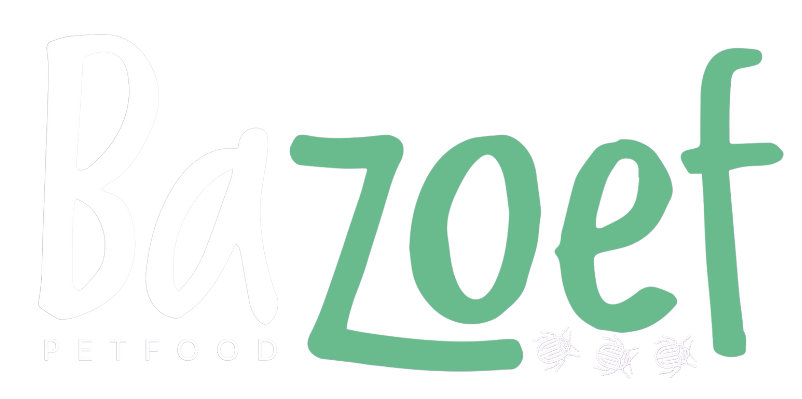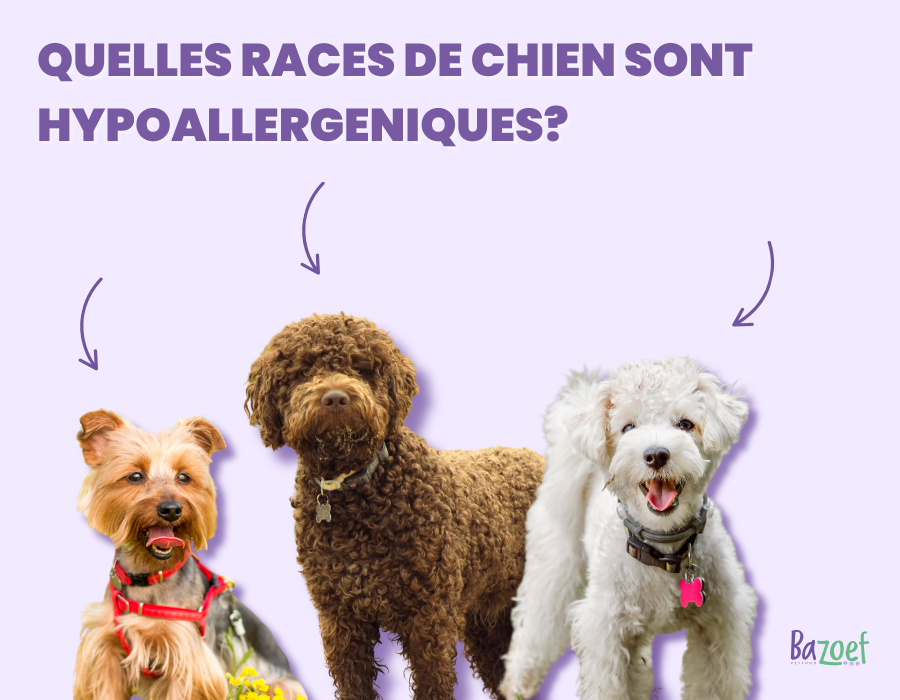For many families, the dream of owning a dog is complicated by allergies.
Sneezing, watery eyes, and skin irritation are common reactions to proteins found in dog saliva, dander, and urine.
This raises an important question: do hypoallergenic dog breeds really exist?
The short answer is no dog is completely allergen-free. However, some breeds shed less hair and release fewer allergens into the environment, which can make them more manageable for allergy-sensitive owners.
In this article, we’ll explore what “hypoallergenic” really means, list 10 popular dog breeds that shed less and produce less dander, and share practical tips for reducing allergens in your home.

Do hypoallergenic dog breeds exist?
Strictly speaking, no dog breed is truly hypoallergenic. All dogs produce allergens, mainly a protein called Can f 1 found in saliva, skin flakes (dander), and urine.
These allergens can become airborne or stick to fur and household surfaces.
While some breeds are popularly labeled “hypoallergenic” because they shed less hair or produce less dander, scientific studies (e.g., Nicholas et al., American Journal of Rhinology & Allergy, 2011) have shown no consistent difference in allergen levels between so-called hypoallergenic breeds and others.
10 Dogs breeds that shed less and produce less dander
Many dogs are marketed as “hypoallergenic,” but no breed is entirely free from allergens.
That said, some breeds shed less hair and release fewer skin flakes, which may make them easier to tolerate for allergy-sensitive owners.
Below are ten popular low-shedding breeds often recommended:
- Poodle (Toy, Miniature, Standard) – Tight, curly coat traps dander; requires regular grooming.
- Bichon Frisé – Soft, curly coat with minimal shedding; frequent grooming needed.
- Portuguese Water Dog – Curly, water-resistant coat; famously chosen by the Obama family for allergy concerns.
- Maltese – Long, silky coat that sheds very little; needs consistent grooming.
- Soft Coated Wheaten Terrier – Single, wavy coat with less dander release.
- Kerry Blue Terrier – Dense, wavy coat; low shedding but requires trimming.
- Lagotto Romagnolo – Curly coat similar to a Poodle; used as a truffle dog in Italy.
- Yorkshire Terrier – Fine, hair-like coat with little dander.
- Shih Tzu – Long coat that sheds minimally when well maintained.
- Irish Water Spaniel – Curly, water-resistant coat with low shedding tendencies.
While these breeds are often seen as more suitable for allergy-prone households, research—including FEDIAF reports—shows allergen production can vary greatly between individual dogs.
Regular grooming and good home cleaning habits are more effective in managing allergies than breed choice alone.
Let us dive into each breed's advantages for people who suffer from dog allergies.
1. Poodle (Toy, Miniature, Standard)

Poodles are one of the most recognized hypoallergenic breeds due to their dense, curly coats.
The curls trap dander and loose hair, helping reduce allergens in the home. Their coat grows continuously, similar to human hair, which means they shed very little.
Regular grooming and trimming are essential for Poodles. With proper care, many allergy sufferers find them easier to live with compared to heavily shedding dogs.
2. Bichon Frisé

The Bichon Frisé has a soft, curly coat that doesn’t shed much, making it popular among people with allergies.
Its coat texture holds onto dander rather than letting it spread through the house.
Consistent grooming is key for this breed. When properly cared for, Bichons are a great option for households looking for a cheerful, allergy-friendly pet.
3. Portuguese Water Dog

This breed is famous for its thick, water-resistant curls that shed minimally.
The coat helps contain allergens, making the Portuguese Water Dog a frequent choice for allergy-prone owners.
The Obama family famously chose this breed for their allergy-sensitive household. With regular grooming, they can be both hypoallergenic-friendly and energetic companions.
4. Maltese

The Maltese sports a long, silky coat that sheds very little, which helps reduce dander in the environment. Its hair-like coat is often easier on allergy sufferers.
That said, their coats require daily brushing to prevent tangling and matting. With proper care, Maltese dogs combine elegance with allergy-friendliness.
5. Soft Coated Wheaten Terrier

The Soft Coated Wheaten Terrier has a single-layer, wavy coat that sheds less than most terriers. This makes them stand out as a lower-dander option.
Their coat needs consistent brushing to stay healthy, but the tradeoff is less loose hair around the home. Many allergy-conscious owners find them a good fit.
6. Kerry Blue Terrier

The Kerry Blue Terrier has a thick, wavy coat that grows continuously with minimal shedding.
This reduces allergen spread and makes them a strong candidate for allergy-sensitive families.
Like other curly-coated dogs, they need regular grooming to maintain coat health. With care, Kerry Blues can be both stylish and manageable in homes concerned with allergies.
7. Lagotto Romagnolo

Known as Italy’s truffle dog, the Lagotto Romagnolo has a curly coat that sheds very little. Its fur traps dander, similar to Poodles and other water dogs.
Grooming is necessary to prevent mats and tangles. With the right maintenance, the Lagotto offers both low-shedding benefits and a lively personality.
8. Yorkshire Terrier

Yorkies have fine, silky coats that resemble human hair more than typical dog fur. They shed minimally, which can make them easier for allergy sufferers to manage.
Their long coats require frequent grooming, but this also helps reduce allergens. Many owners find Yorkies to be an ideal small-breed companion for sensitive households.
9. Shih Tzu

The Shih Tzu’s long, flowing coat produces little shedding when maintained properly. This makes them one of the more allergy-friendly toy breeds.
Consistent grooming and brushing are essential for coat health. With care, Shih Tzus can be a charming choice for families wanting a low-shedding companion.
10. Irish Water Spaniel

The Irish Water Spaniel has a curly, water-resistant coat that sheds very little compared to most sporting breeds. Its unique coat helps limit allergen spread in the home.
Regular grooming is important to keep the curls healthy and clean. For active families seeking a larger low-shedding breed, the Irish Water Spaniel is often a recommended choice.
Reminder: not dog breed is truly hypoallergenic!
While these ten breeds are often promoted as “hypoallergenic,” scientific studies (e.g., Nicholas et al., American Journal of Rhinology & Allergy, 2011; FEDIAF reports) confirm that no dog is completely free of allergens.
All dogs produce proteins like Can f 1 that can trigger allergic reactions. The best strategy for allergy sufferers is to combine careful breed selection with regular grooming, home cleaning, and medical guidance.
4 Best Practices for Living With Dog Allergies
1. Careful Breed Selection
Choosing the right breed is the first step for allergy-sensitive households. While no dog is 100% hypoallergenic, some breeds shed less hair and dander.
Meeting individual dogs before adoption can also help determine your tolerance.
- Research low-shedding breeds before adoption
- Spend time with a dog before bringing it home
- Consider adult dogs, as puppies’ coats may change
2. Regular Grooming
Frequent grooming reduces allergens trapped in a dog’s coat.
Brushing, bathing, and professional trims keep shedding under control. Using hypoallergenic shampoos can also minimize skin flakes and dander.
- Brush your dog several times a week
- Bathe regularly with vet-approved shampoo
- Schedule professional grooming as needed
3. Consistent Home Cleaning
Allergens don’t just stay on the dog—they spread to furniture, carpets, and bedding.
Regular vacuuming with a HEPA filter, washing fabrics, and using air purifiers can significantly reduce allergen buildup in the home.
- Vacuum floors and furniture weekly with a HEPA vacuum
- Wash pet bedding and household fabrics often
- Use air purifiers in rooms where your dog spends time
4. Medical Guidance
Allergy sufferers should consult healthcare professionals for tailored advice.
Options like antihistamines, allergy shots, or nasal sprays can help manage symptoms and make pet ownership more comfortable.
- Talk to your doctor about allergy testing
- Ask about treatment options such as antihistamines or immunotherapy
- Follow medical advice while maintaining a clean pet environment
Conclusion
While no dog breed is completely hypoallergenic, some breeds shed less hair and release fewer allergens, making them more manageable for allergy-sensitive owners.
Careful breed selection, combined with consistent grooming, regular home cleaning, and professional medical advice, can greatly improve life with a dog in an allergy-prone household.
Ultimately, it’s about finding the right balance between responsible pet care and managing allergens so families can enjoy the companionship of their dogs without unnecessary discomfort.
Sources
- Nicholas, C. et al. (2011). Dog allergen levels in homes with hypoallergenic compared with non-hypoallergenic dogs. American Journal of Rhinology & Allergy.
- FEDIAF (European Pet Food Industry Federation). Facts & Figures Report on Pet Population and Responsible Pet Ownership.
- American College of Allergy, Asthma & Immunology (ACAAI). Pet Allergies: Symptoms & Management.
- Arlian, L. G. (2003). The biology of allergens. Current Allergy and Asthma Reports.



